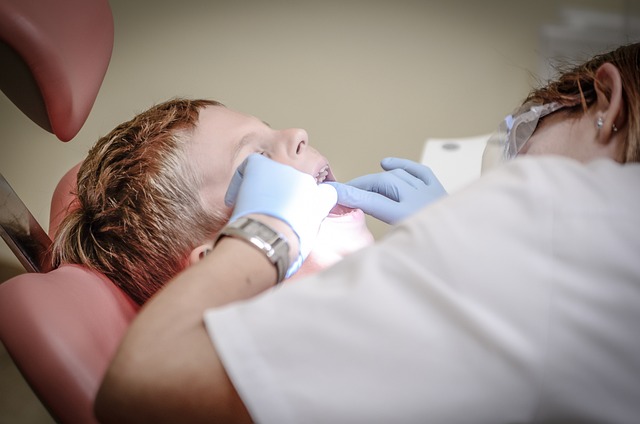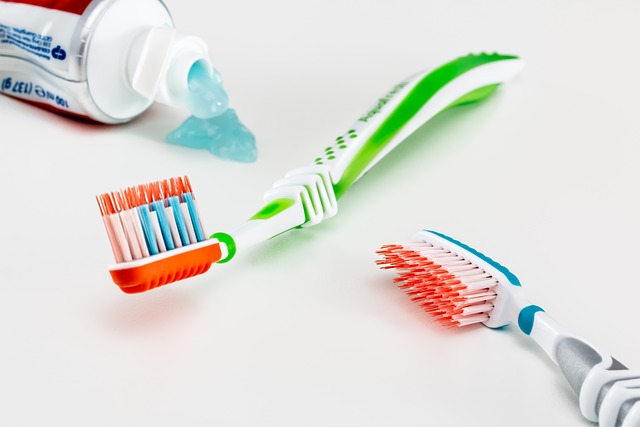Permanent Retainer Breaks: What to Do Next
Welcome to our comprehensive guide on permanent retainer breaks! If you’re reading this, chances are you’ve experienced the all-too-common scenario of a broken permanent retainer. Don’t fret – we’re here to provide you with expert advice on what to do next. Whether you’re familiar with permanent retainers or new to the concept, our confident and knowledgeable approach will equip you with the necessary information to navigate this situation with ease. So, let’s dive in and explore the steps you should take when faced with a broken permanent retainer, all presented in a clear and neutral tone that speaks directly to you.
1. Identifying a Broken Permanent Retainer: Signs and Symptoms to Look Out For
Identifying a broken permanent retainer is essential for maintaining proper dental health. There are several signs and symptoms that you should be aware of to ensure timely intervention and prevent further complications. These include:
- Movement of teeth: If you notice any shifting or movement of your teeth, it may be an indication that your permanent retainer is broken. This can occur due to the lack of support provided by the retainer, allowing the teeth to shift back to their original positions.
- Visible damage: Inspect your retainer regularly and look for any visible signs of damage, such as broken or loose wires. If you notice any irregularities, it is essential to seek professional help to address the issue.
- Pain or discomfort: A broken permanent retainer can cause pain or discomfort in the mouth. If you experience any unusual sensations, such as soreness or irritation, it could be a sign that your retainer needs attention.
It is important to note that sometimes a broken permanent retainer may not exhibit any obvious signs or symptoms. Regular dental check-ups are crucial for detecting any issues that may not be immediately apparent to the untrained eye. Your dentist or orthodontist will conduct a thorough examination and provide the necessary guidance to address any problems with your retainer.
Remember, timely identification and treatment of a broken permanent retainer can help maintain the results of your orthodontic treatment and prevent the need for more extensive dental work in the future.

2. Seeking Professional Assistance: Why a Broken Permanent Retainer Requires Immediate Attention
A broken permanent retainer is a dental emergency that should not be ignored. Seeking professional assistance immediately is crucial for several reasons:
1. Prevent further complications: When a permanent retainer breaks, it can cause a variety of issues, such as teeth shifting, bite problems, and even pain or discomfort. By seeking professional help promptly, you can prevent these complications from worsening and potentially requiring more extensive treatment in the long run.
2. Ensure proper repair: Attempting to fix a broken permanent retainer on your own can be risky and may lead to further damage. It is essential to consult a dental professional who has the expertise and necessary tools to repair the retainer correctly. They will assess the extent of the damage and provide an appropriate solution, ensuring that the retainer functions effectively and maintains its stability.

3. DIY Solutions or Professional Intervention? Weighing Your Options for a Broken Permanent Retainer
When faced with a broken permanent retainer, you might find yourself wondering whether to tackle the issue yourself or seek professional intervention. While both options have their merits, it’s important to carefully weigh your choices to ensure the best outcome for your dental health. Here’s a breakdown of DIY solutions and professional intervention to help you make an informed decision:
DIY Solutions:
- Using orthodontic wax: If a wire is poking or causing discomfort, applying orthodontic wax to the sharp end can provide temporary relief until you can see your orthodontist.
- Repositioning the wire: If the wire has shifted out of place but is still intact, you may attempt to gently push it back into its original position using clean tweezers or a cotton swab.
- Using dental floss: In some cases, a broken wire may have shifted and is poking into your gum or cheek. By carefully sliding dental floss between the wire and your soft tissues, you can create a barrier to prevent further irritation.
Professional Intervention:
- Orthodontic appointment: Seeking professional help is recommended for any significant damage to your permanent retainer. Your orthodontist can assess the situation, make any necessary repairs, and ensure the retainer continues to function effectively.
- Replacing the retainer: If the damage to your permanent retainer is severe or unrepairable, your orthodontist may recommend replacing it entirely. This ensures the long-term stability of your teeth and helps maintain the results of your orthodontic treatment.
- Preventing future damage: In addition to addressing the current issue, your orthodontist can provide guidance on how to prevent future damage to your retainer, such as avoiding certain foods or habits that could cause breakage.

4. The Importance of Timely Repair: Potential Consequences of Ignoring a Broken Permanent Retainer
Ignoring a broken permanent retainer may seem like a minor inconvenience, but the potential consequences can be significant. Here are some key reasons why timely repair is crucial:
- Teeth Shifting: When a permanent retainer breaks, it can no longer maintain the position of your teeth. Over time, this can lead to the shifting of teeth, causing misalignment and affecting your bite. Timely repair ensures that your teeth stay in their proper places and prevents any further movement.
- Gum Irritation and Inflammation: A broken retainer can have sharp edges or protruding wires that can irritate your gums and soft tissues. This can result in discomfort, pain, and even inflammation. By getting your retainer repaired promptly, you can avoid these issues and maintain good oral health.
- Impacted Oral Hygiene: Broken retainers can make it challenging to clean your teeth properly. Food particles and plaque may accumulate around the damaged area, leading to bad breath, cavities, and gum diseases. Repairing your retainer in a timely manner ensures that you can continue practicing good oral hygiene without any hindrances.
Don’t underestimate the importance of getting a broken permanent retainer fixed as soon as possible. By addressing the issue promptly, you can prevent teeth shifting, gum irritation, and complications with oral hygiene. Schedule an appointment with your orthodontist today to ensure your retainer is in optimal condition and your smile remains healthy.

5. Finding the Right Orthodontic Specialist: Choosing the Best Professional to Fix Your Broken Permanent Retainer
When it comes to fixing a broken permanent retainer, it’s crucial to find the right orthodontic specialist who can provide the best care and ensure a successful outcome. With numerous options available, it’s important to consider the following factors before making a decision:
- Experience: Look for an orthodontic specialist who has a proven track record in treating broken permanent retainers. Experience brings expertise and confidence, ensuring you receive the highest quality of care.
- Specialization: Seek a professional who specializes in orthodontics and has extensive knowledge of permanent retainer repairs. Their specialized training and expertise will ensure they are up to date with the latest techniques and advancements in the field.
- Reputation: Research the specialist’s reputation by reading reviews and seeking recommendations from trusted sources. A positive reputation reflects their ability to deliver exceptional results and provide a satisfactory patient experience.
Additionally, consider factors such as location, office hours, and cost. It’s essential to choose a specialist who is conveniently located, offers flexible appointment times, and provides transparent pricing information. By carefully evaluating these factors, you can make an informed decision and choose the best orthodontic specialist to fix your broken permanent retainer.
6. Understanding the Repair Process: What to Expect When Fixing a Broken Permanent Retainer
When it comes to repairing a broken permanent retainer, it’s important to have a clear understanding of the process and what to expect. Here are some key points to keep in mind:
1. Evaluation: The first step in the repair process is an evaluation by your orthodontist. They will examine the extent of the damage and determine the best course of action. This may involve taking X-rays or other diagnostic tests to get a better idea of the situation.
2. Removal: Once the evaluation is complete, the broken retainer will need to be removed. Your orthodontist will carefully detach the retainer from your teeth, ensuring minimal discomfort during the process. It’s important to note that you should never attempt to remove a broken retainer on your own, as this can lead to further damage or injury.
3. Repair or Replacement: Depending on the severity of the damage, your orthodontist will either repair the broken retainer or replace it entirely. In some cases, a simple repair may be sufficient, while in others, a new retainer may be necessary. Your orthodontist will discuss these options with you and recommend the best solution.
4. Re-Attachment: Once the repair or replacement is complete, the retainer will be re-attached to your teeth. Your orthodontist will ensure a secure and comfortable fit, making any necessary adjustments to ensure proper alignment.
5. Follow-Up Care: After the retainer is re-attached, your orthodontist will provide you with specific instructions for follow-up care. This may include wearing a temporary retainer for a period of time or scheduling regular check-ups to monitor the progress of your treatment.
By understanding the repair process and knowing what to expect, you can approach fixing a broken permanent retainer with confidence. Remember to consult with your orthodontist for personalized advice and guidance throughout the process.
7. Preventing Future Breaks: Tips and Tricks to Maintain a Healthy and Durable Permanent Retainer
When it comes to maintaining a healthy and durable permanent retainer, there are several tips and tricks that can help prevent future breaks. By implementing these strategies, you can ensure that your retainer remains intact and continues to do its job effectively.
1. Practice proper oral hygiene: Keeping your teeth and gums clean is essential in preventing any damage to your permanent retainer. Brushing at least twice a day and flossing regularly will help remove plaque and food particles that can accumulate around the retainer, reducing the risk of breakage.
2. Avoid hard and sticky foods: Certain foods can put unnecessary strain on your retainer, leading to potential breakage. It is best to avoid hard and sticky foods such as nuts, hard candies, chewing gum, and caramel. Opt for softer alternatives that are gentle on your retainer.
3. Be mindful during physical activities: If you participate in sports or activities that could potentially cause an impact to your mouth, it is important to wear a mouthguard. This protective gear will help shield your retainer from any accidental damage.
4. Schedule regular check-ups: Regular visits to your orthodontist or dentist are crucial in ensuring the longevity of your permanent retainer. They can examine the condition of your retainer, make any necessary adjustments, and address any concerns you may have.
5. Avoid biting on your retainer: Biting down on your retainer, whether consciously or unconsciously, can weaken and damage it over time. Avoid this habit to maintain the durability of your retainer.
By following these tips and tricks, you can prevent future breaks and maintain a healthy and durable permanent retainer. Remember, taking care of your retainer is an investment in your oral health and the longevity of your orthodontic treatment.
Frequently Asked Questions
Q: What should I do if my permanent retainer breaks?
A: If your permanent retainer breaks, it is important to address the issue promptly to ensure the health and stability of your teeth.
Q: Can I fix the broken retainer myself?
A: It is not recommended to fix a broken permanent retainer yourself. Seeking professional assistance from an orthodontist or dentist is crucial to ensure the retainer is properly repaired or replaced.
Q: How soon should I schedule an appointment with my orthodontist?
A: It is advisable to schedule an appointment with your orthodontist as soon as possible after your permanent retainer breaks. Delaying treatment could lead to unwanted tooth movement or potential damage.
Q: What will happen during my appointment with the orthodontist?
A: During your appointment, the orthodontist will examine the broken retainer and assess the extent of the damage. They will then determine the most suitable course of action, which may involve repairing or replacing the retainer.
Q: How long does it take to repair or replace a permanent retainer?
A: The time required to repair or replace a permanent retainer can vary depending on the severity of the damage. In some cases, the orthodontist may be able to fix it during the same appointment. If a replacement is necessary, it may take a few days to a week for the new retainer to be fabricated.
Q: Will I need to wear a temporary retainer while waiting for the repair or replacement?
A: In some instances, the orthodontist may provide you with a temporary retainer to wear while waiting for the repair or replacement. This will help maintain the alignment of your teeth until the permanent retainer is fixed.
Q: How can I prevent my permanent retainer from breaking in the future?
A: To prevent future breakage, it is important to follow the orthodontist’s instructions regarding retainer care and maintenance. Avoid chewing on hard or sticky foods, and be cautious when flossing or brushing around the retainer to prevent accidental damage.
Q: Are there any alternatives to permanent retainers?
A: Yes, there are alternative options to permanent retainers, such as removable retainers or clear aligners. However, the choice of retainer type will depend on your specific orthodontic needs and the recommendation of your orthodontist.
Q: Will my insurance cover the cost of repairing or replacing a broken permanent retainer?
A: Insurance coverage for retainer repairs or replacements can vary. It is advisable to check with your insurance provider to understand the extent of your coverage and any associated costs.
Q: Is it normal for a permanent retainer to break?
A: While not extremely common, it is possible for a permanent retainer to break. Factors such as accidents, biting into hard foods, or general wear and tear can contribute to the breakage. Regular dental check-ups and proper retainer care can help minimize the risk of breakage.
The Way Forward
In conclusion, when faced with a broken permanent retainer, it is crucial to take immediate action to ensure the long-term health of your teeth. Remember these key takeaways:
1. Don’t panic: While a broken retainer can be concerning, it is a common issue that can be easily resolved with proper care and attention.
2. Contact your orthodontist: Reach out to your orthodontist as soon as possible to schedule an appointment. They will assess the situation and recommend the best course of action.
3. Keep your retainer safe: If a piece of your retainer has broken off, be sure to store it in a safe place. Your orthodontist may need to examine it during your appointment.
4. Maintain good oral hygiene: In the meantime, continue to practice proper oral hygiene. Brush your teeth thoroughly, floss daily, and consider using a mouthwash to keep your teeth and gums healthy.
5. Avoid DIY solutions: While it may be tempting to try fixing the retainer yourself, it is strongly advised against. Improper attempts can lead to further damage or even harm your teeth.
6. Follow your orthodontist’s advice: Once you visit your orthodontist, carefully follow their instructions. They may recommend repairing or replacing the broken retainer to maintain the results of your orthodontic treatment.
Remember, a broken permanent retainer is not the end of the world. By addressing the issue promptly and seeking professional guidance, you can ensure the continued success of your orthodontic journey.






